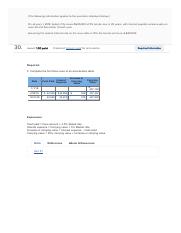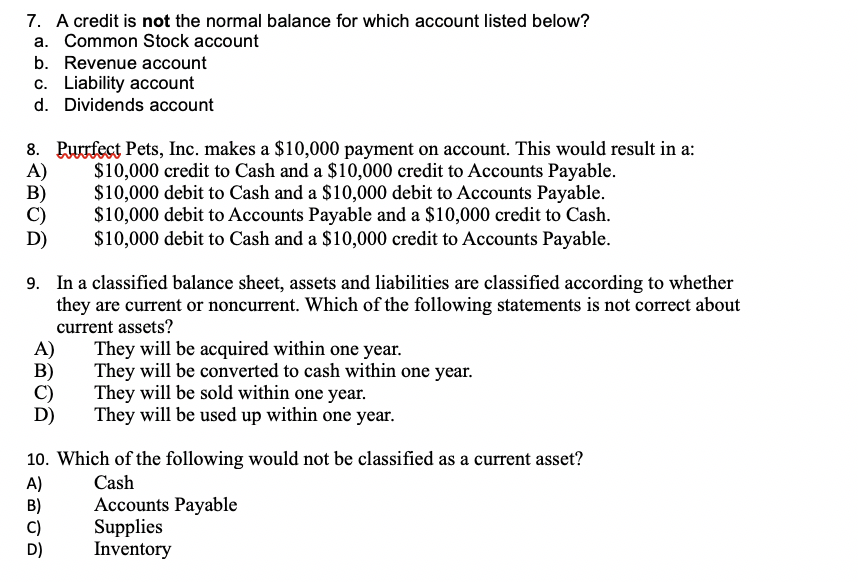
When sending invoices to your clients, be sure to include payment due date terms and conditions. Invoices without due dates will make it difficult for you to forecast your monthly revenue. Instead of a mad scramble at year’s end, a small business accounting checklist can help you stay organized throughout the year for an easy year-end close.
Weekly Reconciliation
It is where future projections, built from the accountancy team’s hard work, can be included. There’s also the option of including a letter from the CEO and other what is the difference between details about changing markets, products, and services. The annual financial report is the culmination of all the hard work put in over the course of the year.
Daily Tasks of Accounting and bookkeeping for ecommerce
Look no further – I’ve created a free one that you can download, WITHOUT giving up your name and email address or subscribing to my newsletter. The cash flow report, or cash flow statement, is focused on looking less at broad overviews of the business and trends, and more on activity within business operations. This process not only brings in industry tips on how to best ensure you receive the payment you’re due, but it allows you to keep your business going while waiting on those payments. This is why we’ve created 11 checklists to guide you through your accounting processes. If you don’t put a process in place for your accounts payable then you could be facing late payment charges or even opening up space for fraud.

Checklists to Optimize Your Accounting Processes
These reports are created by closing the books and provide a summary of the company’s financial position. Year-end accounts include financial statements like balance sheets, income statements, and cash flow statements. Accounting is an essential part of running a business, whether you’re a small mom-and-pop shop or a large corporation. With the business accounting basics under your belt, you’ll be able to get started on keeping track of your company’s financial information. If you’ve established good daily accounting processes, it’ll be much simpler to complete the tasks on your weekly accounting checklist.
Learn more about our full process and see who our partners are here. According to American Productivity & Quality Center (APQC), only about 25 out of 100 businesses are able to close up their books in 10 days at the end of the year. 75 out of 100, approximately, companies take about 35 days for year-end closing.
Many bookkeeping processes we discussed today are manual and extremely error-prone (even with robust internal controls). Try using report builder software to create your accounting reports more efficiently and reduce human error. Plus, with a click of a button, you have a beautiful report ready to share with internal and external stakeholders. By keeping track of what moves quickly and what doesn’t, it’s easier to make adjustments so that you don’t sell out of popular items or hold onto too much inventory. Project planners like a Gantt chart can be a great way to keep track of inventory and help allocate resources. Pay them promptly to avoid penalties, upset vendors, and unwanted debt.
You must estimate how much cash you need in the coming week or month to maintain a sufficient cash reserve. This saved amount can be further used to pay bills, vendors, and employees. Here’s an example of bi-weekly payroll tasks from Karbon’s Monthly Bookkeeping checklist. It can be helpful to conduct weekly reconciliation (and consider it as a subcategory of monthly bookkeeping). This not only prevents errors but saves firms precious time at the end of the month. Nothing keeps an accounting firm more unified and productive than a clear set of repeatable tasks.
- Collection agencies can help you collect past due invoices for a price.
- An efficient system for handling business finances is at the heart of every successful business, whether it is an accounting firm or any other small company.
- Drawing up an accounting daily task checklist—and lists for weekly, monthly and quarterly tasks—requires some up-front work, but it pays off in the long run.
- The entries are made to balance the accounts and ensure their accuracy.
You have plenty of financial statements to review every week, month, quarter, and so on, but your daily business accounting responsibilities consist of one main task. Year-end entries are accounting entries made in the company’s financial books at the end of the fiscal year. The entries are made to balance the accounts and ensure their accuracy. The information is then used to prepare financial statements to show where the company stands in financial terms.
Accounting software like QuickBooks can help you generate financial reports and manage taxes, but for more guidance, see our guide to financial reporting. To keep a handy reference of this checklist, save our infographic below. Managing your cash flow is critical, especially in the first year of your business. Forecasting how much cash you will need in the coming weeks/months will help you reserve enough money to pay bills, including your employees and suppliers. Plus, you can make more informed business decisions about how to spend it.
To get a better handle on managing cash flow, and other small business financial management essentials click here. For most small business owners, managing accounting tasks can be a challenge. The below small business accounting checklist is a comprehensive guide to help you easily navigate the tasks involved. Keeping it on hand will help keep you on track as you move through the year. One of the primary services accountants offer is the preparation of a client’s annual financial statements to display their performance over the year.
Businesses that operate with inventory need to stay on top of ordering on a regular basis to ensure products are in stock. Take the time each week to review your inventory counts and place orders when levels are reaching a low point. To help aid the order process, review how long it took for each product to sell through, and choose the quantity of your order accordingly. This way, you won’t sit on inventory, tying up cash flow, for any longer than you need to. Before we jump into the essential bookkeeping checklist for small business owners, let’s quickly touch on why it’s so important to have a bookkeeping checklist in the first place.
Throughout my years in accounting, I witnessed the potential pitfalls that can derail your Close, leading to missed deadlines and misstatements in your financials. Check with your accountant to see what information they need from you to close your books at year-end and prepare for the upcoming year and tax season. Whatever you decide to do, make sure you have a plan in place to back up those precious accounting records for your business. If you want to wrap up your books for year-end, try to collect the money that customers owe to your business. This means putting in a little legwork and trying to collect past due invoices before the new year.
Without an effective accounts receivable process, you risk losing out on valuable revenue. An efficient system for handling business finances is at the heart of every successful business, whether it is an accounting firm or any other small company. Finance planning what does the adverb modify adverb usage and examples problems make up 66% of the most common reasons for start-up failure. Join over 1 million businesses scanning & organizing receipts, creating expense reports and more—with Shoeboxed. What if your customers aren’t able to pay their invoices off all at once?
Similarly, aged payables are payments that you owe other companies for products or services. Aging reports can be used to keep track of these payments and give you an overview of where they stand. Take some time each month to review your aged accounts so you don’t get too far behind on payments, and you can take necessary steps to collect when needed. Use your accounting software to prepare your customer invoices and send them out. By now, you’ve likely established your payment terms so verify the terms of each client before sending to ensure you’re applying the correct due dates.
As soon as you get a receipt, organize it using your filing or storage system. That way, you don’t have to worry about misplacing the receipt or forgetting to account for it. You must get an job order costing principles of managerial accounting accurate count of the materials and supplies you have on hand if your business has inventory. Otherwise, you could wind up with empty shelves or inventory shrinkage (e.g., expired goods).


